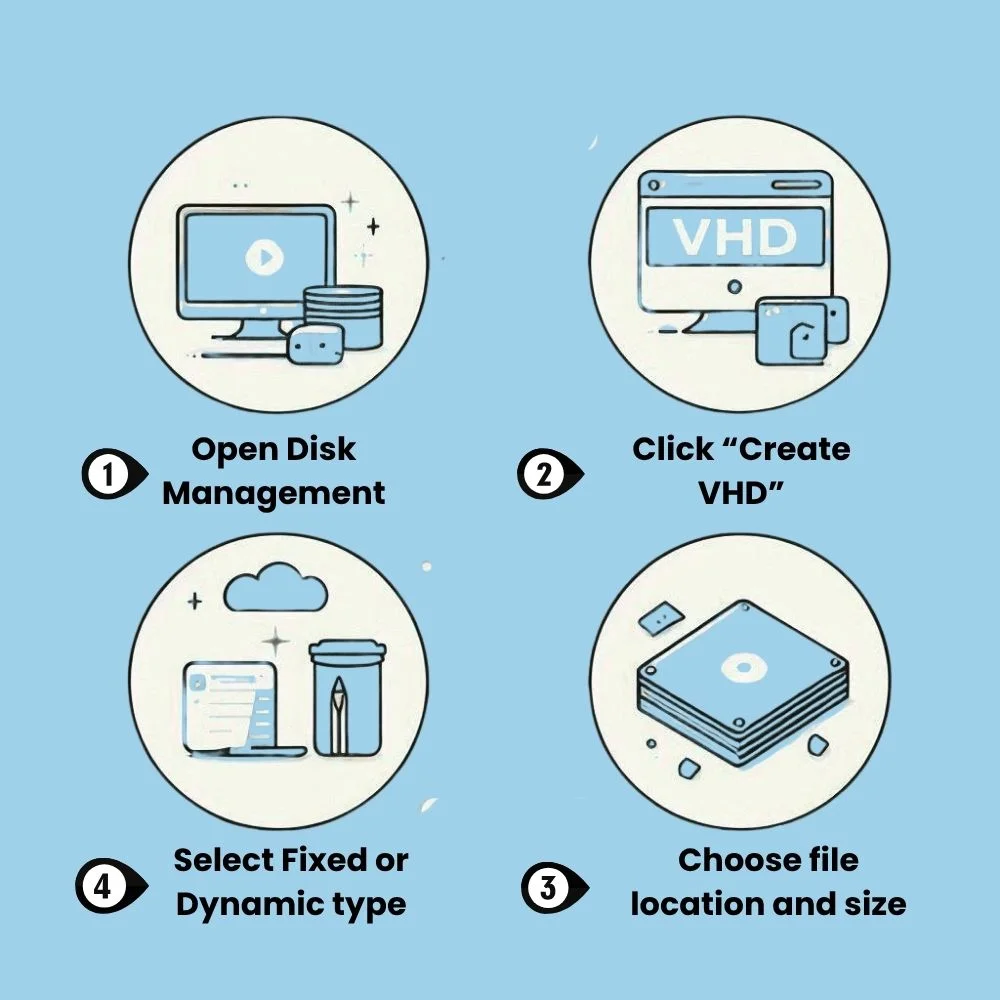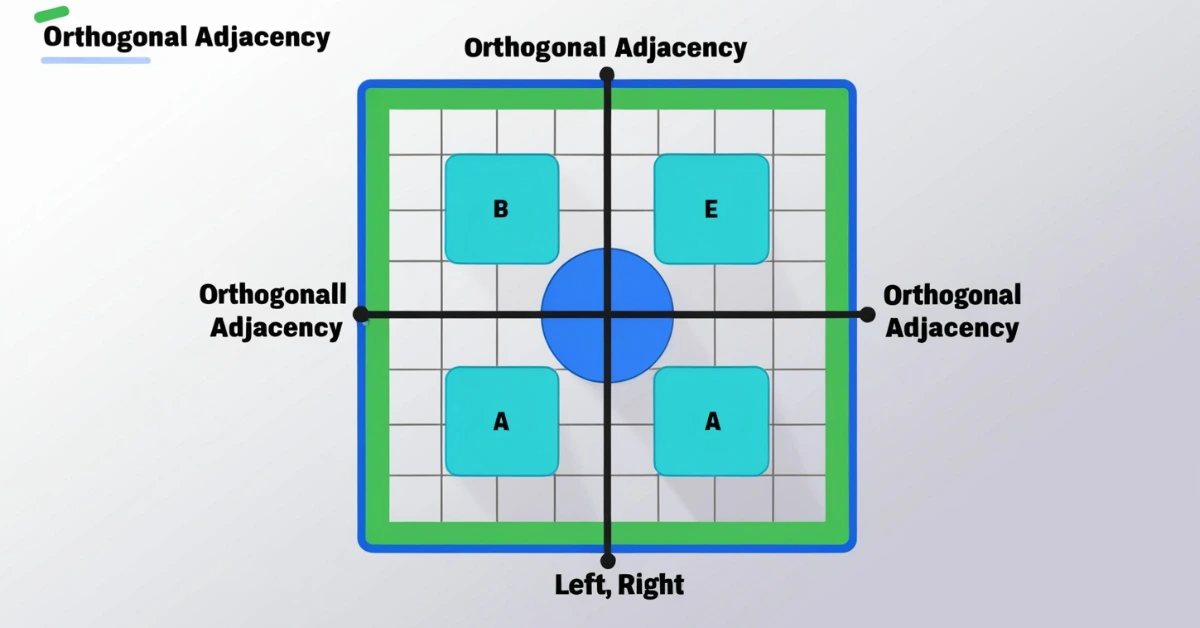A VHD (Virtual Hard Disk) is a digital file that works like a physical hard drive. You can imagine it as a virtual storage container where you can save all types of data such as documents, images, applications, and even the entire operating system. Rather than relying on an actual hard disk, this setup uses the VHD file format to create a virtual drive that behaves just like a real one on your computer.
Why Use VHD Files?
There are many practical reasons people use VHD files. Here are the most common:
- Testing environments: Try out new software without harming your real system. If something goes wrong, you can delete the virtual disk.
- Backups: Save your whole computer or important data in one single file, which can be restored later.
- Virtual machines: VHD files are used as the hard drive for virtual computers, letting you run different systems on one device.
- Easy to carry: You can move the entire VHD file to another computer and use it there.
- Organized storage: Keep different types of data on separate virtual disks to stay more organized.
How Does a VHD File Work?
A VHD acts like a real hard drive, just digital. When you open or mount it using your computer tools or virtual machine software, it appears like a new drive on your system. You can store files, install programs, and even run an operating system on it.
There are two main types of VHDs:
1. Fixed-size VHD
- You choose the size, and it immediately takes that much space on your disk.
- For example, a 20 GB fixed VHD will use 20 GB of space right away.
- It performs faster because space is already reserved.
2. Dynamic VHD
- Starts small and grows as you add more files.
- It only uses as much space as needed, saving disk space.
- It may be slightly slower when it needs to grow in size.
Main Features of VHD
- Easy to move: Just copy the VHD file to another computer.
- Backups and snapshots: Some tools let you take “snapshots” of your VHD to save it at a certain moment.
- Compatible with many systems: VHD is widely supported by virtualization software.
- Customizable: You can partition and format it just like a real hard drive.
VHD vs. VHDX and Other Formats
VHD is the older file format mainly created by Microsoft. There’s also an improved version called VHDX. Here’s how they compare:
- VHD can store up to 2 TB of data.
- VHDX can go up to 64 TB and is more stable and reliable.
- VHDX also performs better and protects against file corruption.
Other similar formats include:
- VMDK used in VMware.
- VDI used in VirtualBox.
- QCOW2 used in QEMU systems.
Each tool may prefer a different format, but you can often convert between them.
How to Create a VHD? 
You can easily create a VHD using tools built into Windows:
- Open Disk Management.
- Select the option to create a new VHD.
- Choose where to save it and how big it should be.
- Decide whether it should be fixed or dynamic.
- Once it’s created, you can format and use it like any normal disk.
Many virtual machine programs also give you the option to create VHDs during setup.
How to Use a VHD File?
Once created, a VHD file can be opened or mounted to act like a regular hard drive:
- In Windows, you can attach a VHD through Disk Management.
- Once attached, it shows up like another drive in File Explorer.
- You can copy files into it, install software, or even install an operating system.
When you’re done using it, you can detach it from your system. This won’t delete the file, just close it.
Use Cases and Benefits
1.Backups
With VHDs, you can back up your entire computer in one single file. If something happens, you can use this file to restore everything quickly.
2.Testing Software
Developers and IT professionals use VHDs to test new apps or settings in a safe environment. If things go wrong, they can delete the test VHD and start fresh.
3.Running Multiple Operating Systems
Using VHDs inside virtual machines, you can run Windows, Linux, or other systems on the same computer without needing extra hardware.
4.Saving Disk Space
A dynamic VHD takes up space only as you use it. This is great if you want to create several VHDs without using too much storage.
Limitations of VHD
- Size Limit: The maximum file size is 2 TB, which may not be enough for some needs.
- Performance: Not as fast as using a real hard drive, especially if dynamic.
- Data Risk: Since all your data is inside one file, if the file becomes damaged, you could lose everything.
- More fragile than VHDX: VHDX is more reliable for larger tasks.
Best Practices
Here are a few smart tips for working with VHD files:
- Pick the right type: Use fixed for speed and dynamic for space-saving.
- Keep backups: Make copies of your VHD files just in case.
- Use snapshots: If your tool supports it, take a snapshot before making big changes.
- Secure your data: If your VHD has private information, use encryption to protect it.
How VHD Files Are Structured?
You don’t need deep technical knowledge to understand what makes up a VHD file. Take a look at a few everyday VHD problems and the best ways to fix them.
- Header: Stores essential information about the virtual disk, including its size and configuration type.
- Footer: Identifies the file format, helping the system recognize it as a valid VHD.
- Data Blocks: These hold the actual content, such as files, folders, and programs.
- Allocation Table: Tracks which areas of the virtual disk are being used, and which are free.
Using VHDs with Cloud Platforms
Many clouds providers support uploading VHD files to run virtual machines directly from the cloud. This makes it easier to migrate local systems online or keep cloud-based backups that are ready to run when needed.
Common Issues and How to Fix Them
Using VHD files is usually smooth, but problems can still happen. Here are a few common ones and their fixes:
- VHD won’t open: Check if it’s already mounted elsewhere or being used by another application.
- File corruption: If the VHD becomes damaged, use disk recovery tools or restore a clean backup.
- Performance issues: If the VHD is slow, consider switching to a fixed-size type for better speed.
- Disk space errors: Monitor your storage regularly to ensure the VHD doesn’t fill up your physical drive.
Final Thoughts
VHD files are a practical way to store, transfer, or back up an entire computer system in one neat file. Whether you’re a casual user saving data or a professional working with virtual environments, VHD offers flexibility and convenience. Despite some limitations, like file size and speed differences, they remain widely useful. And with updated formats like VHDX and support from many tools, working with virtual hard disks continues to be a smart solution for many digital needs.



